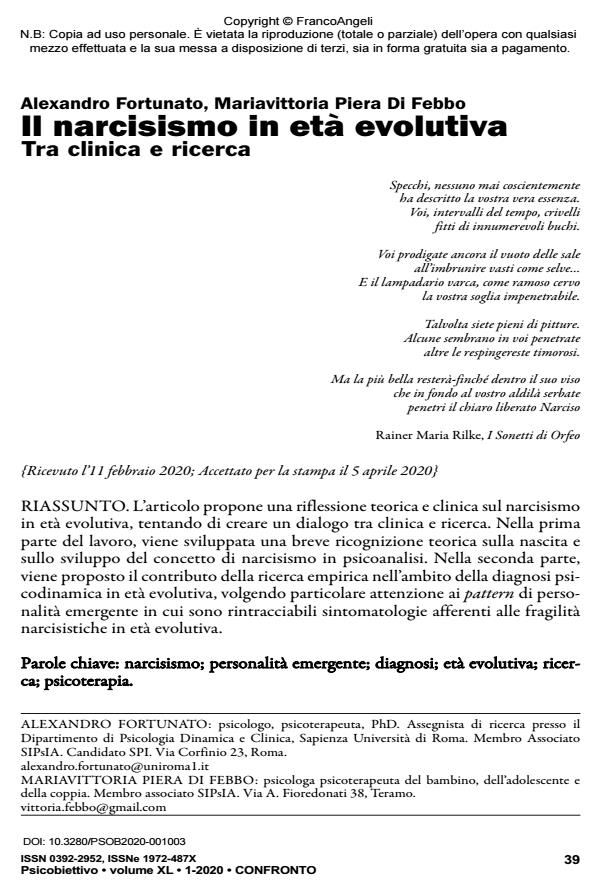Narcissism during adolescence. between clinical and research
Journal title PSICOBIETTIVO
Author/s Alexandro Fortunato, Mariavittoria Piera Di Febbo
Publishing Year 2020 Issue 2020/1
Language Italian Pages 20 P. 39-58 File size 178 KB
DOI 10.3280/PSOB2020-001003
DOI is like a bar code for intellectual property: to have more infomation
click here
Below, you can see the article first page
If you want to buy this article in PDF format, you can do it, following the instructions to buy download credits

FrancoAngeli is member of Publishers International Linking Association, Inc (PILA), a not-for-profit association which run the CrossRef service enabling links to and from online scholarly content.
The article proposes a theoretic and clinical reflection on narcissism during adolescence, attempting to create a dialogue between clinical practice and research. In the first part of the article we will briefly review the origin and development of the concept of narcissism in psychoanalysis. In the second part, we propose to analyse the contribution of empirical research in the context of psychodynamic diagnosis in adolescence, giving particular focus to emerging personality patterns where it is possible to trace symptoms related to narcissistic frailties during developmental age.
Keywords: Narcissism; emerging personality; diagnosis; developmental age; research; psychotherapy.
Alexandro Fortunato, Mariavittoria Piera Di Febbo, Il narcisismo in età evolutiva. Tra clinica e ricerca in "PSICOBIETTIVO" 1/2020, pp 39-58, DOI: 10.3280/PSOB2020-001003